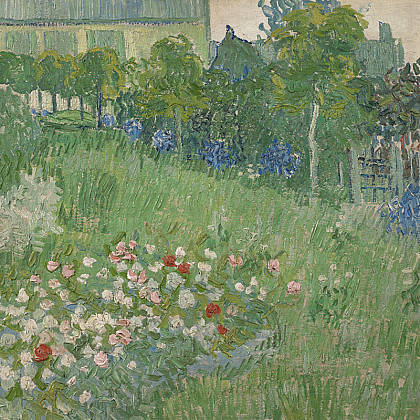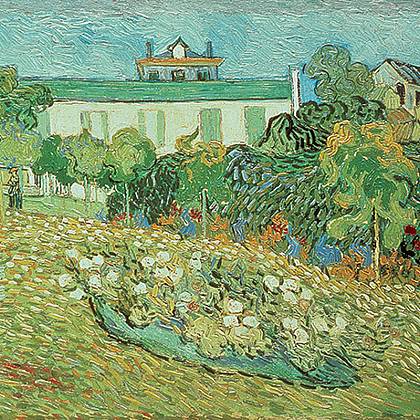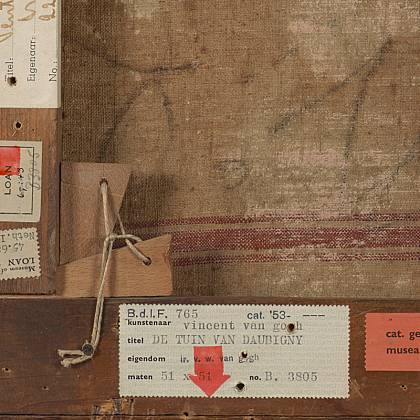The vanishing pink
Daubigny's garden
After thorough examination of the painting, researchers made this colour reconstruction. It offers an impression of the original colour of the ground layer, which was once pink. This fact was discovered by a conservator who examined the painting. She found traces of bright pink paint in places that had not been exposed to light, like the edges of the canvas under the frame.
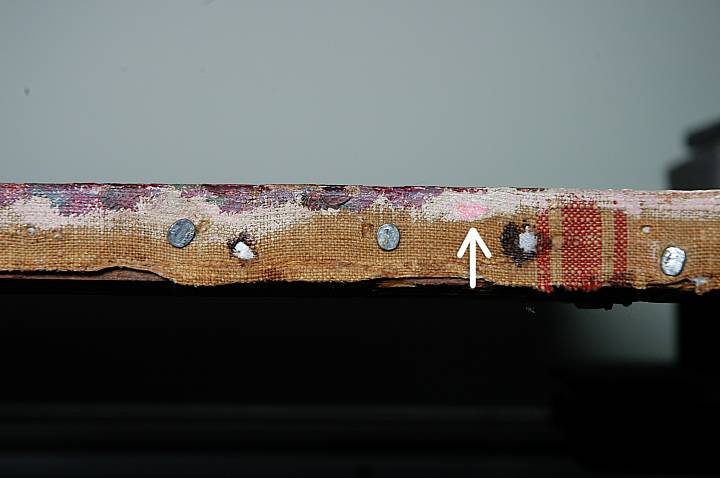
Edge of the canvas with traces of the pink ground.
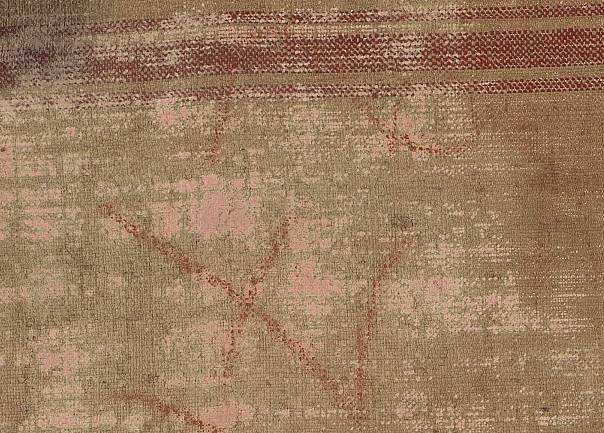
You can also see spots of pink paint on the back, where the ground soaked through the canvas.
Further research with paint samples confirmed that the pink paint has faded over time. The cause of the fading is the synthetic red dye eosin, discovered in the 19th century. Van Gogh was aware that some types of paint would fade. He wrote to Theo:
All the colours that Impressionism has made fashionable are unstable, all the more reason boldly to use them too raw, time will only soften them too much.
Letter to Theo van Gogh. Arles, on or about Wednesday, 11 April 1888.
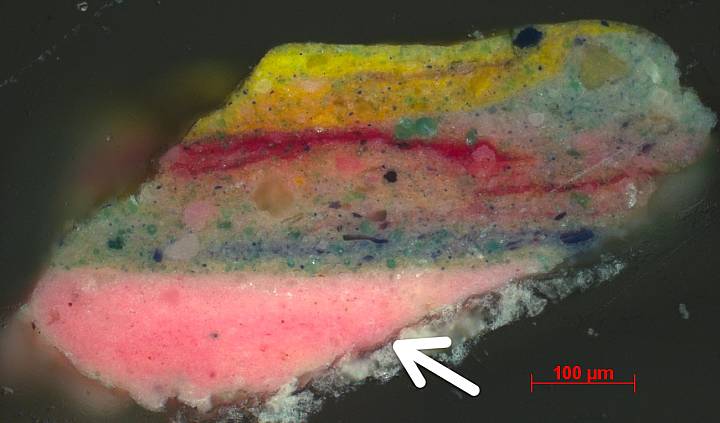
You can see the bright pink ground at the bottom of this paint sample. It has kept its original colour because the layers of paint above it protected it from the light.
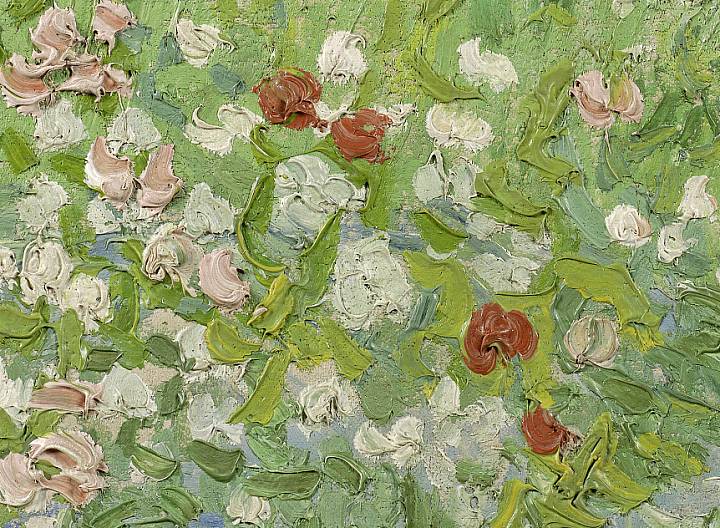
Because Van Gogh used two kinds of red paint in this painting, some roses faded and others did not.
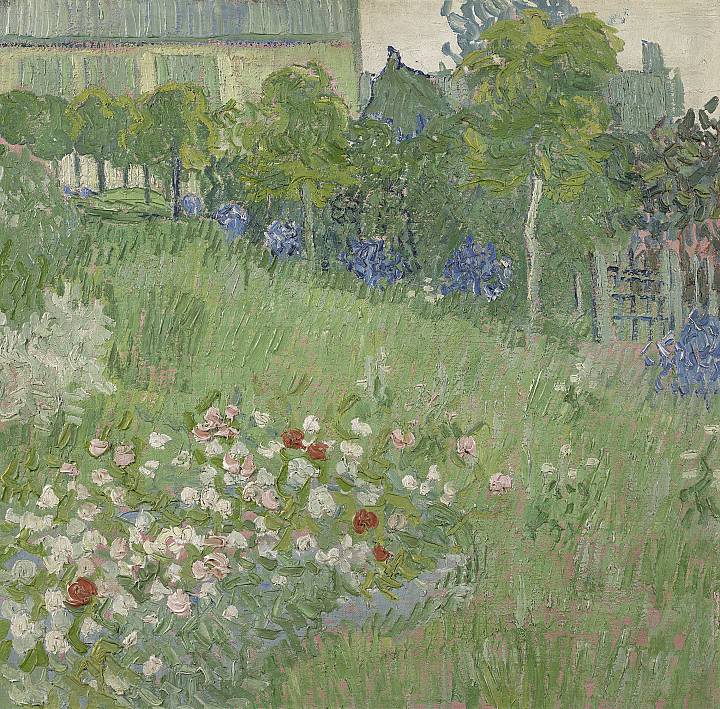
The colour reconstruction was made by Roy S. Berns Munsell Color Science Laboratory Rochester Institute of Technology, U.S.A.
